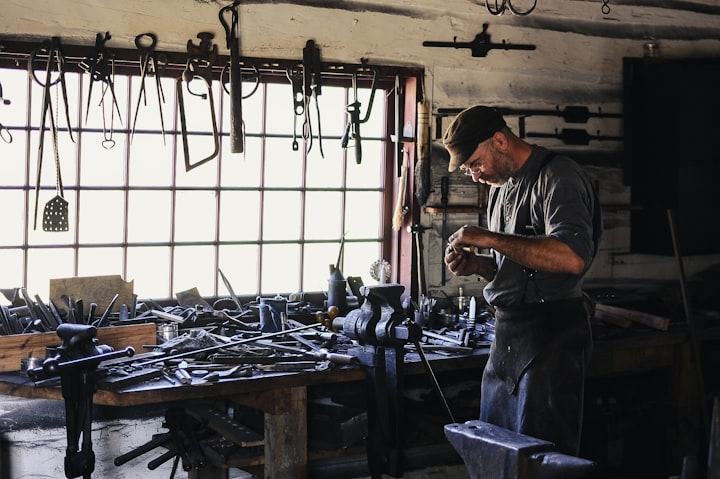How to Use a Table Saw
If you own a woodworking shop or you’re a DIY enthusiast, a table saw is most likely the number one tool you treasure most among your arsenal of tools.

A table saw allows you to make precise and smooth cuts on small or large boards. This tool is also versatile as you can use it to perform several cuts, including a dado cut, crosscut, and a rip cut. Besides, a portable table saw is also flexible and convenient, especially for contractors who may need a saw they can use away from home.
Unfortunately, if you aren’t careful with your table saw, it can be dangerous. You can’t afford to be distracted or misuse this tool as its spinning blade can chop off your finger or even your hand.
To help you stay safe as you get the most out of your table saw, here are guidelines that you should follow when using this workshop tool.
Safety tips when using your table saw
Both novice and pro woodworkers have suffered injuries from mishandling a portable miter saw.
Here are tips you can follow to help you avoid accidents when working with this tool.
Avoid table saw kickback
Kickback is the number one cause of table saw injuries. Kickback refers to when wood suddenly propels backward towards you, the operator. This happens without warning and at high speed, leading to an injury in the chest, head, or torso. A kickback can also cause the wood to be pulled too quickly such that you don’t have time to pull your hand away. In this scenario, your hand gets pulled across the table saw blade.
Here are a few tips to minimize the risk of injuring yourself due to a kickback:
- Use a riving knife or a splitter– A riving knife is a thin metal placed behind the table saw to prevent the board from getting caught at the back of the saw if it moves away from the fence. A splitter can be used as a riving knife alternative as it also keeps the wood from drifting from the fence.
- Use a crosscut sled- A crosscut sled helps you keep your hands from the saw’s blade and also moves the fence to the blade’s front rather than on its side.
- Consider using a push stick – Rather than use your hands to push the wood through the saw blade, use a push stick instead. This will ensure your hands don’t come near the saw blade preventing an injury.
Properly tune your table saw
If you want your table saw to operate efficiently and smoothly, you have to ensure it’s properly tuned. If the saw blade is misaligned against the fence, it will bind. A table saw will also bind if it’s missing some teeth. Always check that your table saw is well-tuned and that the blade is in good condition. If you notice any missing teeth, it’s time to get a new blade.
Avoid free-cutting
You should never use a table saw for cutting without support. Always use a rip fence when making rip cuts and the miter gauge when making crosscuts. You should also ensure the wood you’re using isn’t warped or bent, and it’s completely flat against the table when cutting.
Respect your power tool
Always respect your table saw and its power. Ensure you also use the safety equipment that comes with it. You should also read the manual and follow the instructions when using it.
How to make your cuts
Table saws can make numerous cuts, but two of the most common ones are:
- Rip cuts
- Crosscuts
How to make a rip cut
Ripping refers to the cutting of a material to a given width. When making a rip cut, you should use the rip fence to guide the wood and help you cut according to the desired width.
Here are steps to follow when ripping:
- Fit a rip blade to the blade arbor and adjust the blade’s height such that it’s about ¼ inch higher than the wood thickness. If you set the blade too high, the wood will splinter. If the blade is too low, the wood won’t cut all the way through. Use the adjusting handle at the bottom of your table saw to make the necessary blade adjustments.
- Using a tape measure, determine the distance from the fence to the saw’s blade tooth's closest edge. This helps you position the rip fence and to evaluate the wood amount the blade will cut off.
- Hold the wood to be cut at the table and align it to the rip fence but don’t let it touch the blade. Plugin the saw and turn it on. Wait until it’s at full speed to allow the material to make contact with the blade.
- Use a push device to guide the wood slowly but firmly on the rip fence. You need to ensure the wood is always flat and well-aligned with the fence. Ensure you don’t put your hand close to the saw blade to prevent an injury
- Once your board is well-cut, switch off your table saw.
How to make a crosscut
Making a crosscut enables you to cut material to a given length. When making a crosscut, you don’t use the rip fence. Instead, use a miter gauge.
Here’s a step by step guide on how to make a crosscut:
- Insert a crosscut blade into your saw arbor and adjust the blade in line with the wood’s thickness- about ¼ inch above the wood thickness.
- On the left side of your saw, you’ll see the miter gauge slot. Use it to set your miter gauge. Adjust the protractor in line with the crosscut you intend to make.
- Hold the board with your left hand and ensure it’s against the edge of the miter gauge. If you need clamps to secure the material in place, make sure you use them. Ensure your fingers are at least 6 inches from the cover of the saw blade.
- Turn on your table saw and ensure the wood touches the blade only when it’s at full speed. Push your board slowly but firmly through the blade. Ensure you maintain a firm grip on the board with your left hand, so it doesn’t move from the miter gauge’s edge.
- Once the piece of wood is cut, pull the board back and turn off your table saw.
Final thoughts
In closing, a table saw is a vital workshop tool as it can be used to make a wide range of cuts. It also ensures your cuts are always smooth and precise. Besides, once you buy a table saw, it will serve you for many years. To make the most out of your table saw, use the right procedure to make your cuts and adhere to the safety measures shared above.
About the Creator
Denise Langenegger
Denise Langenegger is part of the team at Instasize – a content creating tool kit for anyone editing photos and online content on mobile.
Instagram: @instasize.official
Twitter: @Instasize






Comments
There are no comments for this story
Be the first to respond and start the conversation.